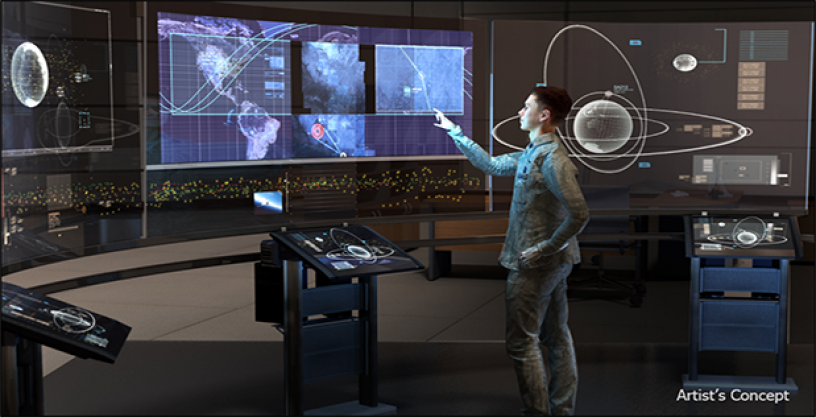Summary

Military commanders responsible for situational awareness and command and control of assets in space know all too well the challenge that comes from the vast size of the space domain.
The volume of Earth’s operational space domain is hundreds of thousands times larger than the Earth’s oceans. It contains thousands of objects hurtling at up to 17,000 miles per hour. The scales and speeds in this extreme environment are difficult enough to grasp conceptually, let alone operationally, as is required for commanders overseeing the nation’s increasingly critical space assets. Complete and timely information is vital to a commander’s ability to react to events in space that may threaten critical and costly assets.
Current space domain awareness tools and technologies were developed when there were many fewer objects in space. Only a few nations could even place satellites in orbit, and those orbits were easily predictable without advanced software tools. That situation has changed dramatically in the past decade with a developing space industry flooding once lonely orbits with volleys of satellite constellations. Despite this much more complex and chaotic environment, commanders with responsibility for space domain awareness often rely on outdated tools and processes—and thus incomplete information—as they plan, assess, and execute U.S. military operations in space.
DARPA’s Hallmark program seeks to provide a full spectrum of breakthrough real-time space-domain systems and capabilities to help address these technical and strategic challenges. The envisioned system would fuse information from diverse sources, allow potential actions to be simulated and effects determined in advance, and vastly reduce the overall time required to make and execute decisions and observe results.
A state-of-the-art enterprise software architecture would support the ability to model current and future space situational awareness and command and control tools, capabilities, subsystems, and systems, as well as external interfaces to air, cyber, land, maritime , and command and control environments. An advanced testbed featuring playback and simulation capabilities would significantly facilitate research and development activities, experiments, and exercises to evaluate new technologies for their impact on space command and control capabilities.
The testbed would be used to expedite the creation and assessment of a comprehensive set of new and improved tools and technologies that could be spun off into near-term operational use for the Defense Department’s Joint Space Operations Center (JSpOC) and Joint Interagency Combined Space Operations Center (JICSpOC).
Office
Tactical Technology OfficeThis program is now complete
This content is available for reference purposes. This page is no longer maintained.
